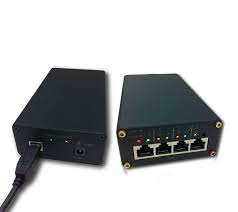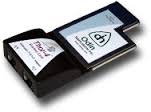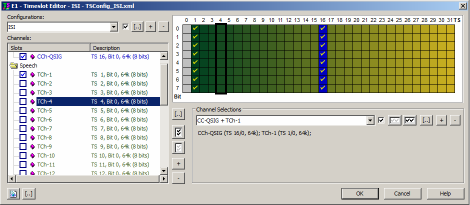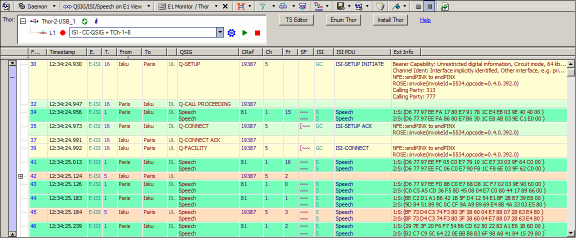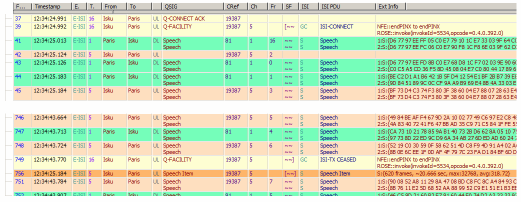Tetra ISI network monitoring and analysis with Argos
The Tetra Inter System Interface (shortly ISI) is a set of recommendation and open interface standards to connect two or more independently owned and operated TETRA networks, from same or different manufacturer, and offer a limited subset of Tetra services for groups of users of those networks. Typical cases are cross border Tetra communication services, or internetworking between independent Tetra networks in same country or city, run by different organizations.
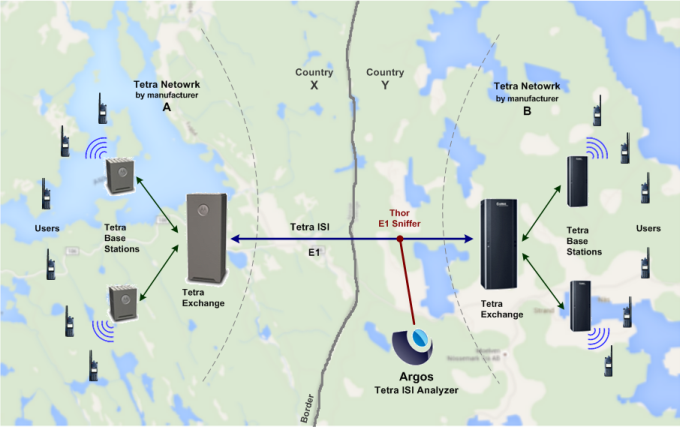
The Tetra ISI is covered by ETSI standards, Tetra Association documents, Memorandum of Understandings (MoU) and Interoperability Profile (IP) documents, agreed between manufacturers.
The Tetra ISI services consists of Individual Call (IS), Group Call (GC), Mobility Management (MM) and Short Data (SD) services. There is also the Packet Data (PD) service, however, in practice it is not much used, as IP based technologies suits better as transport layer for data exchange.
At the physical layer of Tetra network interconnectivity, the 2.048 MBits/sec E1 (B Channel) interface is used, divided in 32 channels of 64 kBits/sec bandwidth. The first channels is allocated to synchronization, one channel is allocated to control/signalling (timeslot 16), and the rest of 30 channels cary Tetra encoded speech, used in Individual and Group calls.

On the signalling channel, E1 timeslot 16, the data link layer is served by the LAPD protocol, on top of which the QSIG is used for network and transport layer. QSIG protocol provides supplementary and additional network features. It is implemented in two layers: the basic call and generic function. The QSIG basic call defines how calls between two or more PBXs (PuBlic eXchanges) occur.
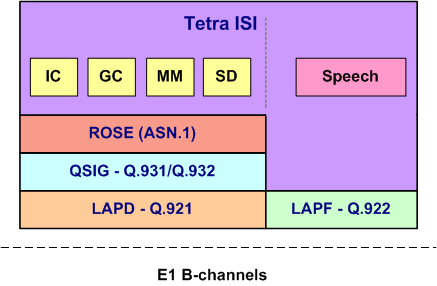
The generic function layer defines supplementary services that are used on large networks such as call forwarding, call intrusion, and line identification, etc.. QSIG uses ROSE (Remote Operations Service Element) to invoke specific supplementary service at the remote PINX (Private Integrated services Network eXchange), through the supplementary services IE (Information Element). The ROSE invoke operation code OID value 0.4.0.392.0, or itu-t(0).identified-organization(4).etsi(0).tetra(392).isi-encoding-operation(0) is used to identify the Tetra ISI protocol data content as the argument of the ROSE invoke operation.
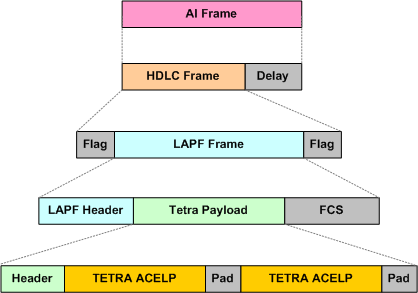 On the speech channels, E1 timeslots 1...15 and 17...31, the LAPF frame relay protocol provides the data bearer of the ACELP encoded Tetra speech. Each speech channel is one E1 timeslot, 8 bit wide, with a 64 kBit/s throughput. The speech traffic bits and bytes are grouped in 170/3 millisecond frames, carrying two speech payloads of 137 bits, which packed with additional header and LAPF and HDLC frame bits, bit stuffing, makes up the ~ 420 bits or 52 ms data content on the wire. With a gap of ~4.6 milliseconds to the next frame, the duration of a speech frame on the E1, matches the duration of 56.66 milliseconds of one Air Interface frame.
On the speech channels, E1 timeslots 1...15 and 17...31, the LAPF frame relay protocol provides the data bearer of the ACELP encoded Tetra speech. Each speech channel is one E1 timeslot, 8 bit wide, with a 64 kBit/s throughput. The speech traffic bits and bytes are grouped in 170/3 millisecond frames, carrying two speech payloads of 137 bits, which packed with additional header and LAPF and HDLC frame bits, bit stuffing, makes up the ~ 420 bits or 52 ms data content on the wire. With a gap of ~4.6 milliseconds to the next frame, the duration of a speech frame on the E1, matches the duration of 56.66 milliseconds of one Air Interface frame.
The Argos Tetra protocol analyzer monitors the communication interface using an USB or ExpressCard connected E1 line sniffer, and decodes speech and signalling, all protocol levels from LAPD to ISI, and beyond, as the SDS may carry other higher level, open standard or proprietary protocols.
The signalling and speech channels can be monitored independently or simultaneously, multiple channels and E1 lines at the same time.
The analyzed data are shown in multiple views, starting from the lowest LAPD view, QSIG view and ISI view, with or without Tetra ISI speech content.
When speech is monitored with corresponding signalling, using the information in QSIG and ISI protocol, the speech frames are automatically reassembled in speech items, decoded from Tetra and available for export or playback in WAV format.
As an evolution of Tetra systems interconnectivity, in the future, the ISI signalling will be part of SIP/IP payload and the speech being transported over UDP (see ISITEP initiative). Since Argos handles already Ethrenet/IP monitoring and analysis, including UDP and SIP, the ISI and it new lower layers support will be available as well.
The ISI and lower layers signalling can be also decoded from various input formats, text or binary or proprietary formatted logfiles.
The Argos also offers various other input interfaces, like logfiles, clipboard, serial, Etehrnet/IP, SSH and Telnet sessions, TCP or UDP endpoints, or any custom monitoring device with an API (Application Programming Interface) can be interfaced through a plugin mechanism.
The Argos uses a proprietary, easy to use, clear text format XML Protocol Description Language, to define all aspects of the monitoring, analysis, post processing and presentation, which is easy to adapt and update, when and if needed.
Encryption feature for logfiles and protocol definitions is available, if any of these contain proprietary or sensitive information.
Because of the flexibility to adapt to almost any source of data, the various ways to present the analysis, Argos can be used in all phases and areas of a Tetra ISI:
- product development and testing
- maintenance and troubleshooting
- interoperability certification
- live network monitoring
If you are interested to know more about the Tetra ISI monitoring solution with Argos, or any other Tetra and E1 monitoring solutions, or you would like to have a free trial version of Argos, contact us.


